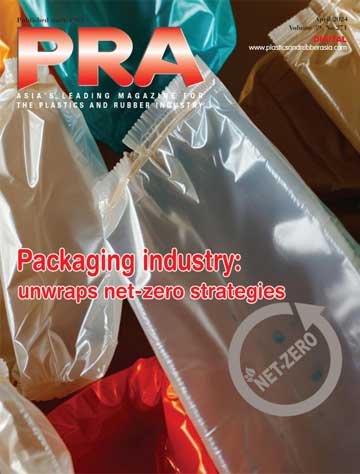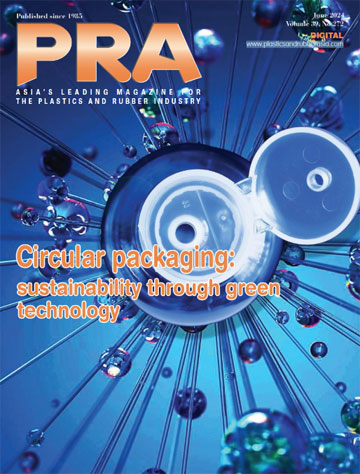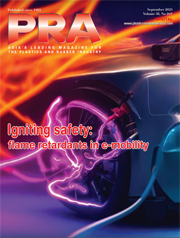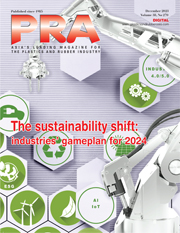Green Technology: Finding the “perfect” packaging that more than meets the eye (Part 2)
Asia increases participation; leads in convenient packaging
Asia is at the centre of innovation, according to Daniella. “It is home to nearly half or 48% of the world’s manufacturing output, and from a supply perspective, offers tremendous opportunity for innovation, with rising middle class and urbanisation,” she said, adding that at this year’s PIA 40% of the submissions were from Asia.

The panelists agreed that the Asian region has driven the demand for convenient packaging and leads in flexible packaging formats, especially Japan, where up to 80% of products are sold in pouches or refill packs. Asia excels in small pack formats like sachets, ensuring diverse, sustainable packaging options, without compromising consumer experience, according to the panelists.
Daniella also shared that in Asia Pacific, trends closely mirror those observed globally, emphasising the rapid growth driven by an expanding middle class and urbanisation. This region stands out for its accelerated demand for convenience, which is surpassing more mature markets.
With half of global manufacturing located in Asia, there is a significant opportunity to innovate in packaging materials and production methods. Collaborative efforts with customers, brands, and upstream partners are crucial in achieving impactful innovations quickly. By leveraging these partnerships and shared expertise, Asia Pacific aims to capitalise on its dynamic market growth effectively.
Gautam added that Asia offers the best in class in flexible packaging. “Across the region, there's a shift towards sustainable materials, transitioning from multi-layer laminates to mono-materials that can be recycled. However, the challenge lies in ensuring these recyclable materials are collected effectively. “
He also stressed that collaborative efforts along the value chain in Asia, involving brand owners, recyclers, and companies like Dow, are crucial. These partnerships aim to increase collection volumes of lightweight flexible packaging, which traditionally garners less interest from recyclers compared to heavier materials like bottles.
This collaborative approach has positioned Asia as a dynamic hub for flexible packaging innovation, where technological advancements and consumer habits are gradually driving industry-wide shifts over time.
Sustainability with PCR, advanced materials
Sustainability is currently central to all packaging design, integrated from the very start, according to the panelists.

Along the same vein, recent advancements in monomaterials have enhanced consumer experience and disposal ease, as highlighted by panelists. These materials, now utilised in various industries, are driving increased interest in collection, reprocessing, and production of post-consumer recycled (PCR) packaging.
Gautam commented: “One thing we have experienced in the industry is that you cannot simply sell sustainability to consumers. Therefore, we need to start designing products with sustainability in mind from the outset. What we are seeing now is a holistic approach to the consumer experience, where every aspect of design considers sustainability. For instance, we previously dealt with packaging made from composite or multilayer materials that were difficult to recycle. Despite this, we still need to deliver a seamless consumer experience, from opening the pouch to disposing of it after use. While we have seen a shift from multimaterial to monomaterial packaging, some monomaterials initially had performance issues, forcing consumers to compromise. This time, we have pushed the boundaries by enhancing single-material performance and adding additional features, maintaining or even improving the consumer experience while ensuring recyclability.”
Meanwhile, Laura Buen Abad, Technology Director/Global/ Rigid and Flexible Packaging at US-based packaging firm Sonoco, stated, "When discussing the transition from packaging that uses multiple materials to achieving circularity, our goal is to focus on specific streams such as polyethylene, paper, or metal. Essentially, we aim for a single material to exhibit the properties, behaviour, and processability of these previously combined materials. This approach enables us to advance material circularity effectively.”
AI and user connectivity
The adoption of Artificial Intelligence (AI) technologies in the plastics industry encourages data-driven innovations by enhancing production performance, cutting maintenance costs, optimising processes, and reducing waste.

David Luttenberger, Global Packaging Director at US-based research firm Mintel and moderator of the fireside chat session, shared about utilisation of connective technologies even in packaging.
“We're seeing a significant increase in the use of QR codes, RFID, NFC, and AI. In particular, AI is poised to revolutionise the entire world by taking evolutionary steps forward. (It is transforming) the entire packaging supply chain, from design and sourcing to production, trace and track, safety, and consumer engagement. AI will engage consumers on a greater level, sometimes in ways that may seem ‘scary’, but also very entertaining and informative. It will move us from mere fun to enhanced functionality, adding value to our lives by providing information and entertainment in new and more meaningful ways.”
Daniella expounded: “With AI and enhanced access to data, the need to protect your data diminishes. Since data is readily available, why not join forces across the value chain and even the entire industry to innovate and advance together? This collaborative approach can lead to finding answers before the questions are even asked. AI allows us to stay ahead of ourselves, which is a significant shift. This change was evident in the Packaging Innovation Awards and is transforming the way we approach future innovations.”
The panelists also added that AI significantly enhances the efficiency of industrial designers, allowing them to generate more ideas quickly. They agreed that it improves content creation, enabling precise communication on consumer labels and adding valuable information to packaging, as AI excels at analysing vast amounts of market and consumer insights, concisely summarising data, and driving efficiency in a company’s packaging innovation process.
“We need to understand how the packaging and product work together in harmony from the user’s perspective,” according to David from Mintel, adding that “packaging is a way to build an emotional connection to drive purchasing decision.”
READ: Green Technology: Finding the “perfect” packaging that more than meets the eye (Part 1)
(PRA)SUBSCRIBE to Get the Latest Updates from PRA Click Here»






